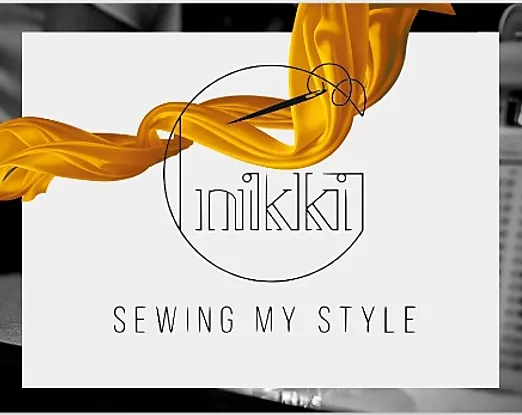The Love/Hate of Velvet
Ask me about velvet fabric and I will say “velvet is the devil!” Especially stretch velvet with all is creaminess and yummy bold color, therein lies the ability for this fabric to make you mad with every seam. We also love it because it makes any garment rich in color and texture and makes you look good in it.
Let's talk about working with velvet and hopefully I can help you develop your own best practices to make your next velvet-making experience a happy one.
Velvet fabric properties: multi-layered with dense piles, high breathability and comes in stretch and non-stretch. Also called velveto and velveteen, velvet is made with vertical yarn which helps the directional nap when you brush your hand across it (changes shades)....thereby making it imperative that you place your pattern pieces along the directional grain so your garment shows the same shade when worn. Velvet should also be sewn the same direction of the nap.
There are many types of velvet: chiffon, crushed embossed or even hammered - all can be used for upholstery, hats/accessories and makes beautiful dresses. Your costs will depend on the silk properties of the velvet you buy. Velvet made with synthetic materials is generally quite inexpensive. Full-silk velvet, however, may cost hundreds of dollars per yard since making this fabric is so labor-intensive. Velvet fabric that is woven with care using sustainable materials will always cost more than fabric that was made cheaply using synthetic textiles.
Credit: "What is Velvet Fabric?" Sewport.com Boris Hodakel is the Founder and CEO
Tips for sewing a velvet dress:
1. When purchasing velvet in the fabric stores, if the velvet is folded on a cardboard bolt, be weary of this. Folds will mar the velvet pile and create distinct lines in your fabric. Fabric retailers should hang velvet from the selvage sides with spiked hangers. Sometimes velvet will be rolled on a cylinder. Either way, check out the pile and quality of the velvet when purchasing.
2. Your first experience should be a simply constructed dress or skirt or top - a garment with minimum gathers and darts and topstitching. This will give you practice and the opportunity learn the behavior of your fabric. And let me say this: I DID NOT use this tip - this is why I'm sharing it with you!
3. Cut pattern pieces on the WRONG side of the fabric, as it's easier to pin and cut. Pattern pieces can move and shift across the velvet pile if cut on the RIGHT side.
4. There's no such thing as too many pins! Use them. I suggest pinning your seams together and pressing the seam edges together with your fingers to make the piles come together (imaging how velcro fuses together)....do this with your seams before stitching. The piles of velvet from both sides will come together and hopefully not shift under the presser foot. Hold the fabric taunt as your sew and use a longer stitch width.
Other methods used:
- spray adhesive before stitching
- hand basting
- use of a walking foot, Teflon foot or roller foot
5. Use a needle as if you were sewing silk or chiffon. My favorite needle is size 70 or 80 Microtex, along with cotton or silk thread.
6. NO IRONING! You can ruin your velvet pile with the pressure of an iron. Use steam only and lay a ham down on the area to create the result you want. Also use a ironing cloth, always on the reverse side of the velvet.
7. Allow your finished garment to hang for a few days to settle. Hemming the bottom should be hand-sewn and consider using a satin/silk bias strip for your hem finish.
Good luck and as you review my photos, think about all the tips above and how I'm so mad at this dress!
McCall Dress Pattern #7802 - I've made this dress a few dozen times because it fits and has multiple versions of sleeves and lengths.
I have have just one more season with these boots - love them!
Shamica West and Mary Kelly - sewing sisters forever!
Thank you Shamica and Mary for fun day taking pictures. And our new friend/photographer Klarque Garrison - you really captured our fun day.
Thanks for the love!
Nikki








